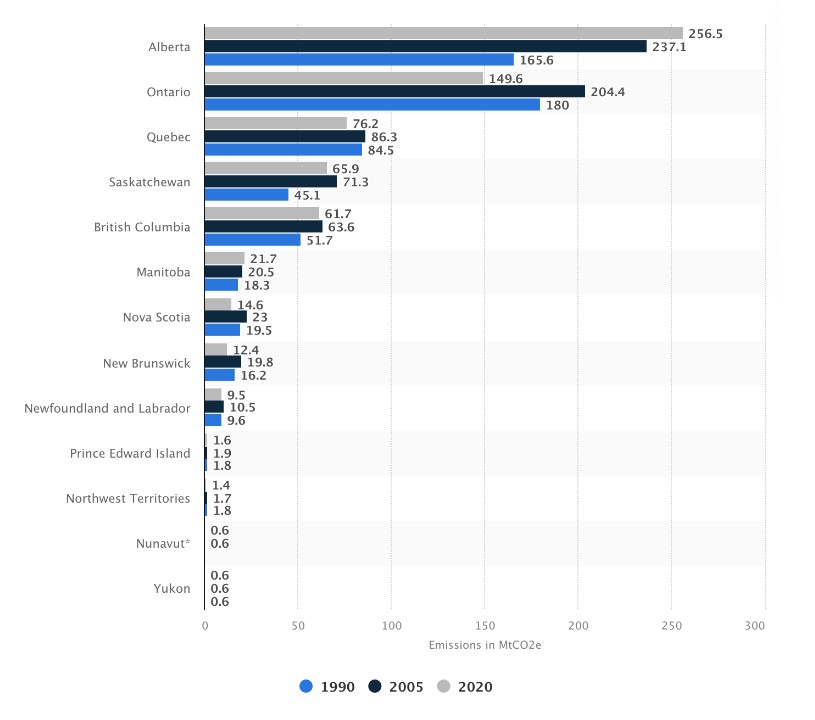Canada needs an emissions cap on the oil and gas sector. What is more, Canadians overwhelmingly support such a cap. In fact, as a recent Abacus Data poll reveals, seven out of ten Canadians support a cap on emissions in the oil and gas sector. Even in Alberta, a majority of residents — 59% — support this cap. To appreciate this situation, let’s cast a glance backwards at historical emissions growth within the oil and gas sector, then fast forward to the current moment. Oil and gas is an immensely successful sector of the Canadian economy, but its success has come at a cost. Canadian crude oil production has grown rapidly in the last three decades, from 1.7 million barrels per day (b/d) in 1990 to 4.7 million b/d in 2019. Conventional crude oil led the way at first, but since 2009, Alberta oil sands have made up the largest share of Canada’s crude. The Canada Energy Regulator illustrates this growth in Canadian Crude Oil Exports: A 30 Year Review. Not surprisingly, the oil and gas sector’s GHG emissions have grown right along with the increase in production. In fact, between 1990 and 2020, total GHG emissions increased by 74% (76 Mt CO2 eq). This figure does not include the downstream emissions from exported oil and gas, which typically amount to about 80% of overall emissions. By 2020, oil and gas emissions accounted for 27% of Canada’s total. The following graph from Environment and Climate Change Canada illustrates the relative emissions growth in all sectors of Canada’s economy. Emissions have held steady or decreased in some sectors, while growing steadily in oil and gas. When we look at emissions growth in individual provinces, Alberta stands out, mostly due to its oil and gas sector. According to Statista, Alberta produced the largest share of Canada’s overall emissions in 2020 — 256.5 million metric tons of carbon dioxide equivalent (Mt CO2e). This figure represented an increase of 55% compared with 1990 levels. Looking forward, these growth trends have tremendous significance as Canada races to achieve net zero by 2050. We know that emissions will not stop overnight. All sectors of our economy, and all provinces, will continue to emit greenhouse gases as they develop alternate technologies and processes to reduce their emissions. But a balance must be maintained so that every economic sector and every province can continue to thrive during this transition. If one sector or one province is allowed to increase its emissions during the transition, others will be unfairly restricted. There is also a significant risk that Canada as a whole will overshoot its net zero target as a result of this imbalance, driving the climate to new extremes around the world (and in Canada as well). Balance is key. We need an oil and gas emissions cap to maintain geographical and sectoral balance in the economy as we transition to net zero. Canadians understand this necessity, and so do Albertans.Laser Talk: Oil and Gas Emissions Cap
Laser Talk: Oil and Gas Emissions Cap
Home » CCL Canada News » Laser Talk: Oil and Gas Emissions Cap














